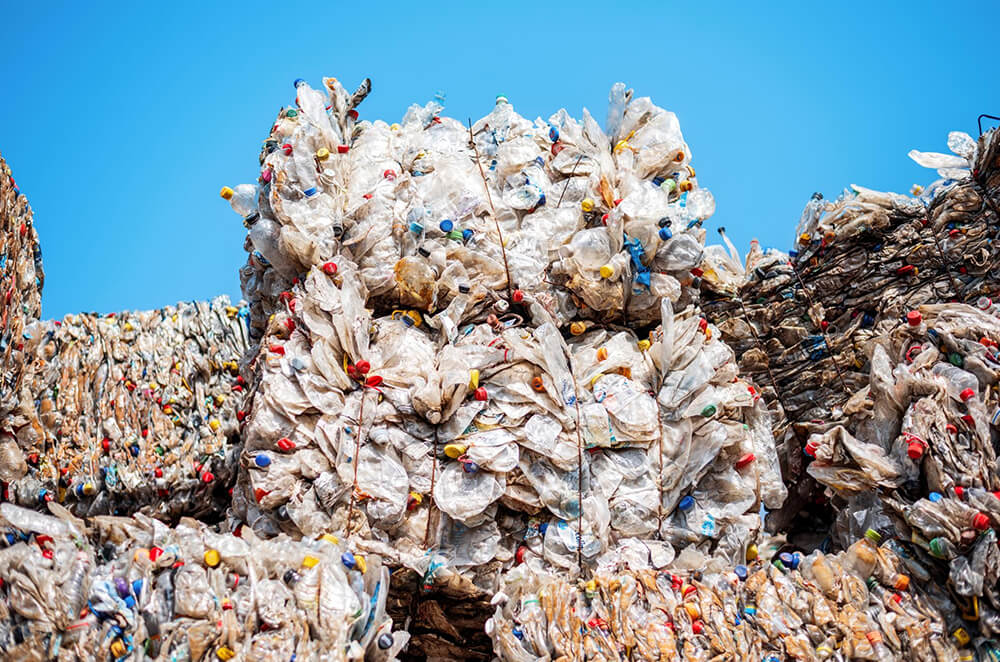
Eight ways to overcome the waste pollution crisis
Fecha: 21/04/2025
Humanity generates between 2.1 billion and 2.3 billion tons of municipal solid waste a year.
When improperly managed, much of that refuse—from food and plastics to electronics and textiles—emits greenhouse gases or poisonous chemicals. This damages ecosystems, inflicts disease and threatens economic prosperity, disproportionately harming women and youth.
“Overconsumption is killing us. Humanity needs an intervention,” says UN Secretary-General António Guterres.
Here are eight ways to embrace a zero-waste approach:
- Combat food waste
Some 19 per cent of food available to consumers is wasted annually despite 783 million people going hungry. Around 8 to 10 per cent of the planet’s greenhouse gas emissions come from the production of food that is ultimately squandered.
There are lots of ways to turn that tide. Municipalities can promote urban agriculture and use food waste in animal husbandry, farming, green-space maintenance and more. They can also fund food waste composting schemes, segregate food waste at source and ban food from dumpsites. Meanwhile, consumers can buy only what they need, embrace less appealing but perfectly edible fruits and vegetables, store food more wisely, use up leftovers, compost food scraps instead of throwing them away, and donate food before it goes bad, something made easier by a bevy of apps.
Recovery is already on the menu in some places. By example, in Nigeria, the non-profit organization No Hunger Food Bank works with the Adeta Indigenous community to reduce post-harvest losses by recycling cassava peels into animal feed.
- Take on textile waste
Less than 1 per cent of the material used to produce clothing is recycled into new items, resulting in over US$100 billion in annual material value loss. The textiles industry also uses the equivalent of 86 million Olympic-sized swimming pools of water every year.
To counter that, the fashion industry needs to become more circular. Brands and retailers can offer more circular business models and products that last longer and can be remade, governments can provide infrastructure for collecting and sorting used textiles, communicators—including influencers and brand managers—can shift fashion’s marketing narrative, and consumers can assess if their clothing purchases are necessary.
“Zero waste makes sense on every level,” says Michal Mlynár, UN-Habitat Acting Executive Director. “By retaining materials within the economy and enhancing waste management practices, we bring benefits to our economies, our societies, our planet and ourselves.”
- Avoid electronic waste
Electronics, from computers to phones, are clogging dumpsites around the world as manufacturers continually encourage consumers to purchase brand-new devices.
Through robust policymaking, governments can encourage consumers to keep their products for longer while pushing manufacturers to offer repair services, a change that would bring a host of economic benefits.
“As the world drowns in waste, humanity must act,” says Sheila Aggarwal-Khan, Director of UNEP’s Industry and Economy Division. “We have the solutions to solve the waste pollution crisis. We just need commitment, collaboration and investment from governments, businesses and individuals to implement them.”
- Reduce resource use in products
Raw material use has more than tripled over the last 50 years, driving the destruction of natural spaces and fueling the triple planetary crisis of climate change, nature and biodiversity loss, and pollution and waste.
Producers can follow nationally determined eco-design standards to reduce energy and resource use while minimizing hazardous chemicals in production. These standards also ensure products are durable, repairable and recyclable while using.
This should be part of a larger effort to design products through what is known as the lifecycle approach. This entails reducing resource use and emissions to the environment throughout all stages of a product’s life, from production to recycling.
(it continues in the next publication)
SOURCE: www.unep.org
